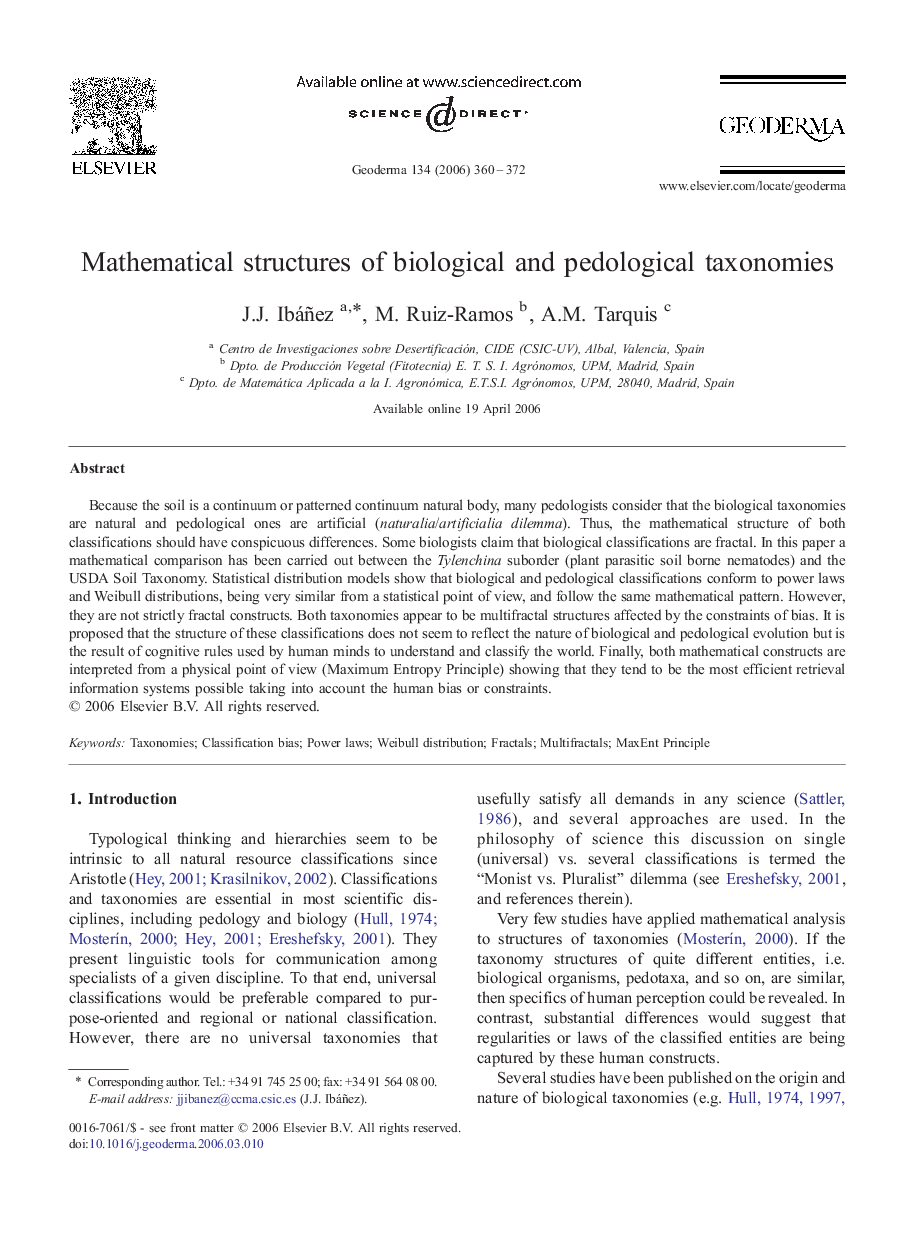| Article ID | Journal | Published Year | Pages | File Type |
|---|---|---|---|---|
| 4575460 | Geoderma | 2006 | 13 Pages |
Because the soil is a continuum or patterned continuum natural body, many pedologists consider that the biological taxonomies are natural and pedological ones are artificial (naturalia/artificialia dilemma). Thus, the mathematical structure of both classifications should have conspicuous differences. Some biologists claim that biological classifications are fractal. In this paper a mathematical comparison has been carried out between the Tylenchina suborder (plant parasitic soil borne nematodes) and the USDA Soil Taxonomy. Statistical distribution models show that biological and pedological classifications conform to power laws and Weibull distributions, being very similar from a statistical point of view, and follow the same mathematical pattern. However, they are not strictly fractal constructs. Both taxonomies appear to be multifractal structures affected by the constraints of bias. It is proposed that the structure of these classifications does not seem to reflect the nature of biological and pedological evolution but is the result of cognitive rules used by human minds to understand and classify the world. Finally, both mathematical constructs are interpreted from a physical point of view (Maximum Entropy Principle) showing that they tend to be the most efficient retrieval information systems possible taking into account the human bias or constraints.
